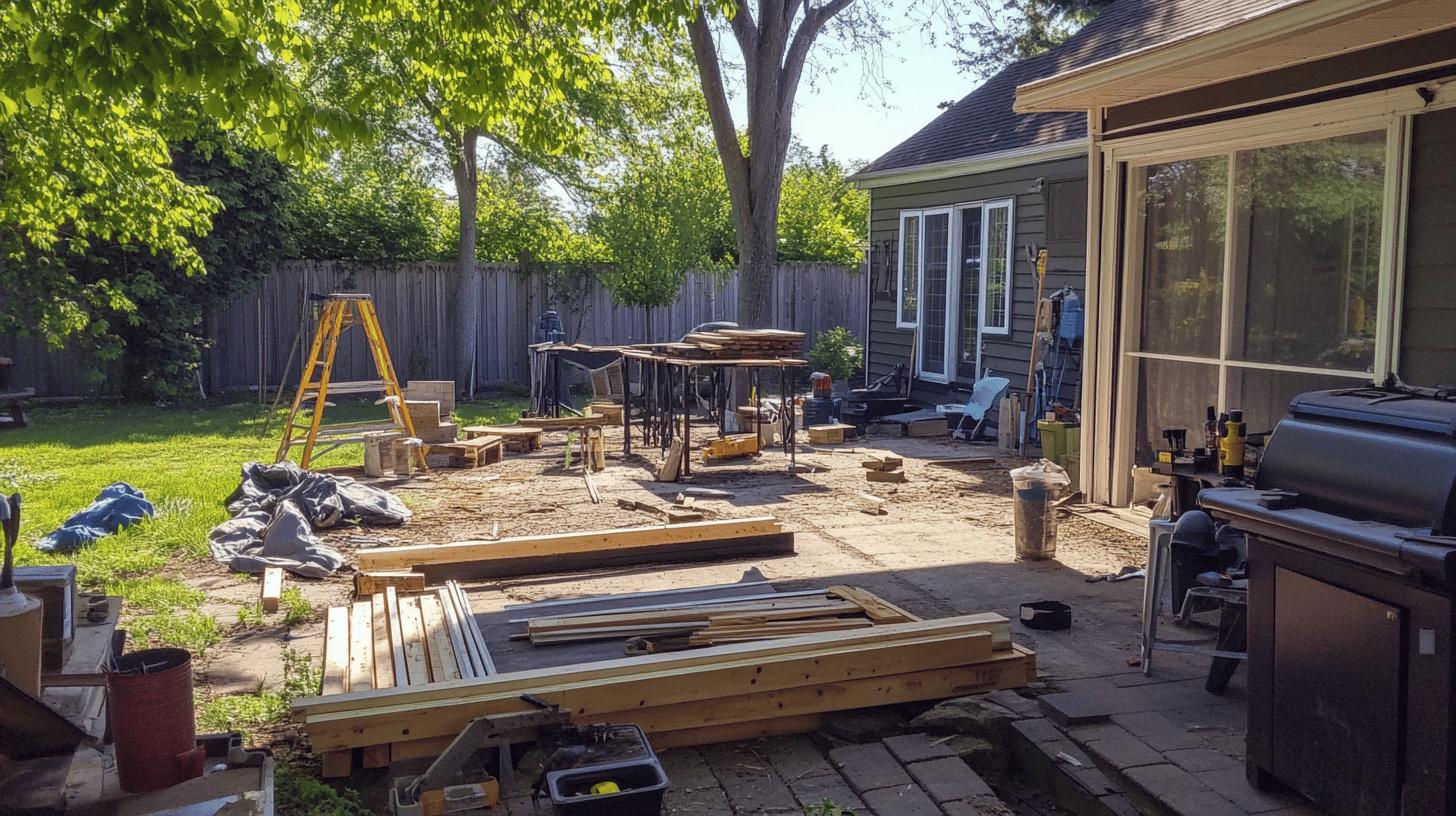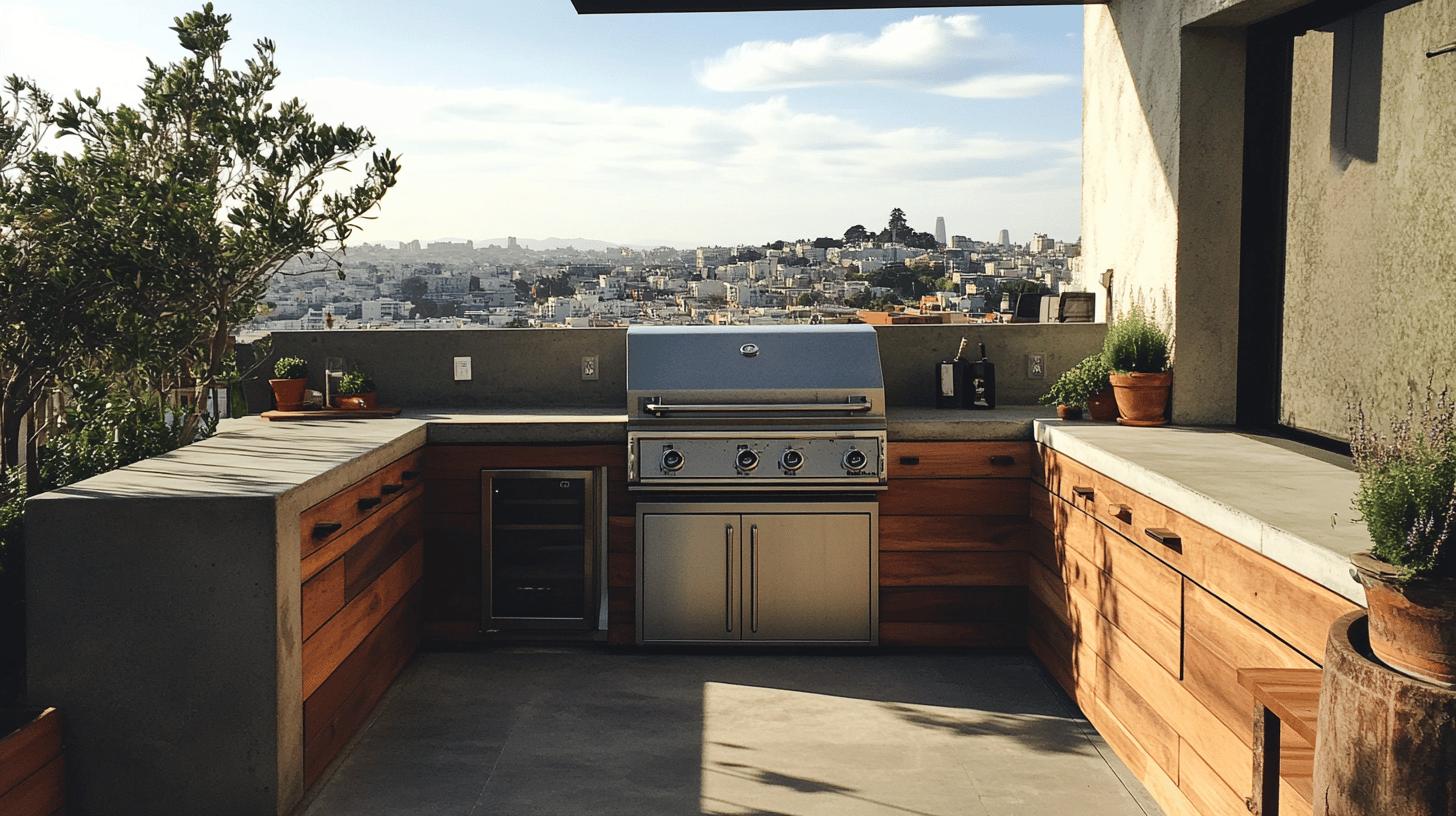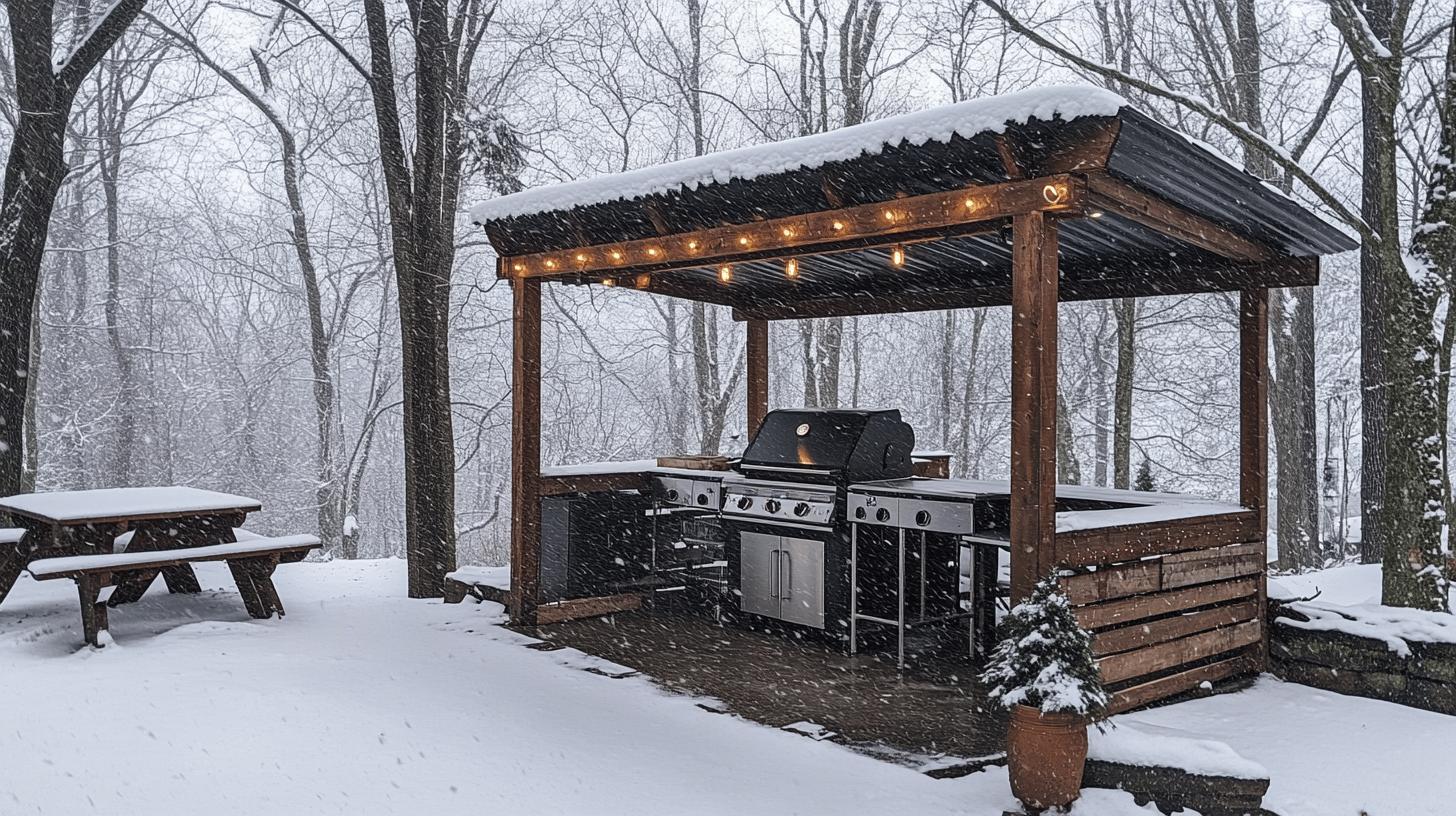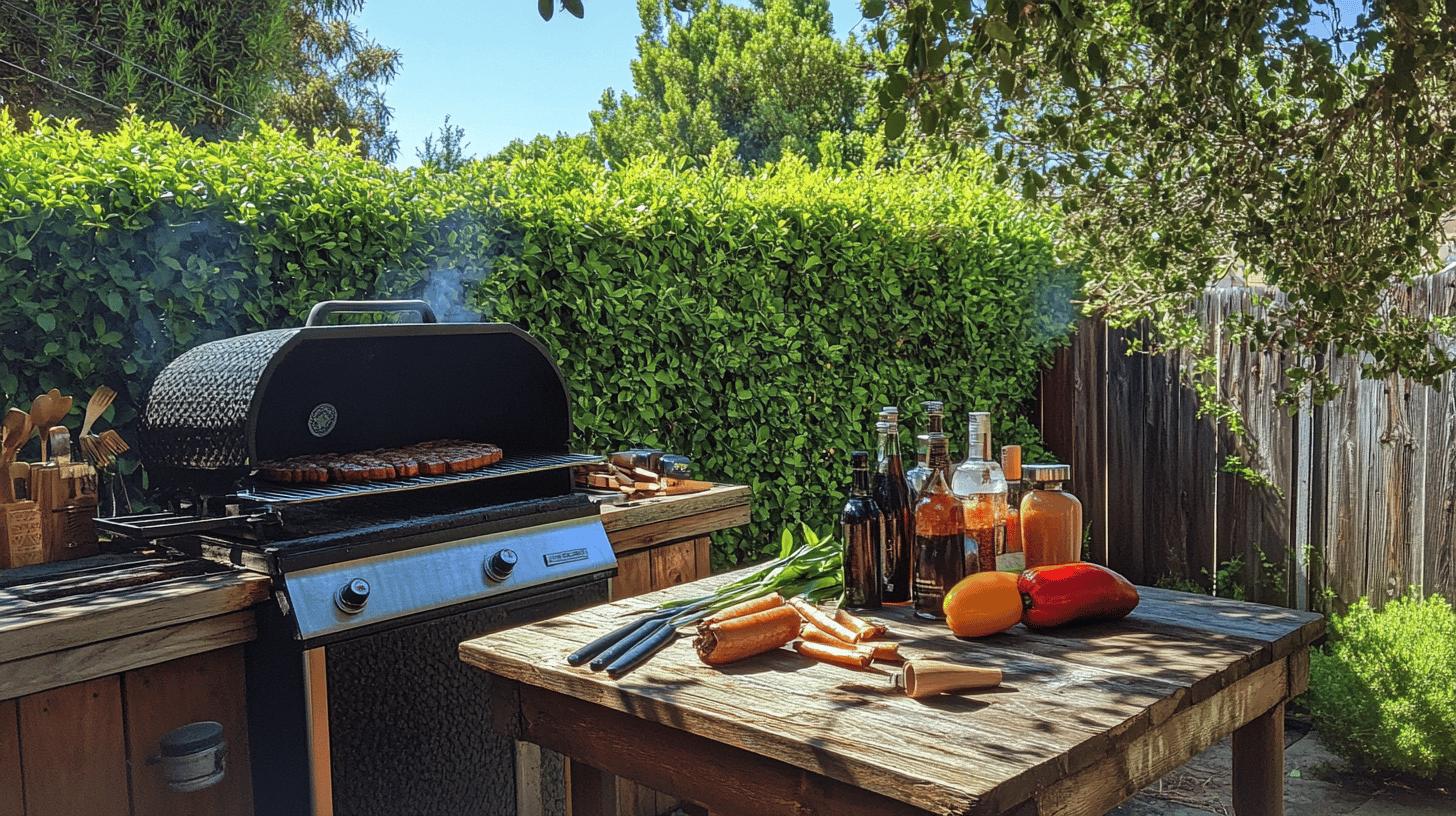DIY Backyard Grilling Station: Creating Your Outdoor Cooking Sanctuary
The Vision: More Than Just a Cooking Space
Every memorable backyard gathering has a central hub – a place where food, conversation, and creativity converge. A well-designed grilling station is more than just an outdoor kitchen; it’s a social centerpiece that transforms ordinary meals into extraordinary experiences. By investing time and creativity into your DIY project, you’re not just building a structure, but crafting a backdrop for future memories.
Understanding Your Outdoor Cooking Needs
Before diving into construction, take a moment to reflect on how you’ll use this space. Are you a weekend BBQ enthusiast who loves hosting large gatherings? A culinary experimenter wanting to expand beyond traditional grilling? Or a family looking for a versatile outdoor cooking area? Your unique lifestyle will guide every design decision, from layout to appliance selection.
Essential Materials and Tools Checklist

Why Material Choice Matters
Selecting the right materials isn’t just about aesthetics – it’s about creating a durable, functional space that can withstand diverse weather conditions and frequent use. Pressure-treated lumber, for instance, resists rot and insect damage, ensuring your frame remains sturdy for years. Hardiebacker cement boards provide critical fire protection, transforming your grilling station from a potential hazard to a safe cooking environment.
Materials Overview
- Pressure-treated lumber (4x4s and 2x4s)
- Hardiebacker cement boards
- Galvanized stainless steel sheets
- Countertop materials (concrete, stone, or granite)
- Weather-resistant cabinets
- Stone veneers (optional)
Construction: Building with Purpose and Precision
The Foundation of Functionality
When constructing your grilling station, every measurement and material choice tells a story of intentionality. A well-built frame isn’t just about supporting weight – it’s about creating a stable platform that can handle the heat, humidity, and constant use of outdoor cooking.
Framing Philosophy:
- Prioritize structural integrity
- Plan for future modifications
- Consider weight distribution
- Create a level, square base
Fire Safety: More Than Just a Precaution
The fire-resistant layer is your station’s protective shield. By carefully installing Hardiebacker cement boards and galvanized stainless steel sheets, you’re not just following building codes – you’re creating a safe environment that gives you peace of mind while cooking.
Finishing Touches
With the frame and fire-resistant materials in place, focus on the final aesthetic touches. Install your choice of countertops, such as concrete or stone, for a durable and attractive finish. These can be cut to size and placed firmly on top of the cement boards. For added elegance, consider applying stone veneers around the exterior of the station. This not only enhances visual appeal but also provides additional insulation. Finish by installing any built-in appliances or storage features, ensuring everything is secure and functional.
Precision and safety are paramount throughout the construction process. Adhere strictly to measurements and double-check all installations. By focusing on these details, you’ll create a grilling station that’s both beautiful and safe, ready to elevate your backyard gatherings.## Step-by-Step Guide to Building Your Grilling Station
Embarking on a DIY grilling station project requires the right materials and tools. Gather 4x4s and 2x4s for the frame, Hardiebacker cement boards for fire resistance, and galvanized stainless steel sheets for the grill area. In addition, you’ll need a saw, drill, cement screws, and measuring tape. With these essentials, you’re ready to start constructing your backyard grilling station.
Building the Frame
Start by constructing the frame using pressure-treated lumber, ensuring durability against weather conditions. Measure and cut the 4x4s for the vertical supports and 2x4s for horizontal framing. The size will depend on your specific design needs, but a typical setup might be around 6 feet wide by 3 feet deep. Secure the pieces together with 3-inch nails or screws to form a sturdy base. Remember to check that all corners are square to maintain structural integrity.
Adding Fire-Resistant Materials
Once the frame is complete, it’s time to apply fire-resistant materials. Cover the frame with Hardiebacker cement boards, attaching them securely with cement screws. These boards provide a layer of fire protection, crucial for safe grilling. In the central grill area, install galvanized stainless steel sheets. These sheets are both durable and heat-resistant, ensuring your station remains safe during cooking sessions. Be sure to wear safety gloves, as the edges can be sharp.
Finishing Touches
With the frame and fire-resistant materials in place, focus on the final aesthetic touches. Install your choice of countertops, such as concrete or stone, for a durable and attractive finish. These can be cut to size and placed firmly on top of the cement boards. For added elegance, consider applying stone veneers around the exterior of the station. This not only enhances visual appeal but also provides additional insulation. Finish by installing any built-in appliances or storage features, ensuring everything is secure and functional.
Precision and safety are paramount throughout the construction process. Adhere strictly to measurements and double-check all installations. By focusing on these details, you’ll create a grilling station that’s both beautiful and safe, ready to elevate your backyard gatherings.
Customizing Your Grilling Station for Functionality

Incorporating built-in appliances is a game changer for any custom grill station, enhancing both its functionality and convenience. By including features like a built-in fridge, you can keep ingredients fresh and beverages cool without needing to dash indoors every time you need something. Other options include built-in warming drawers, which are perfect for keeping cooked food at the right temperature until serving. These appliances streamline your cooking process, turning your grilling area into a fully equipped outdoor kitchen.
Customizing countertops and storage is another essential aspect of creating a functional grilling area. Concrete countertops are an excellent choice due to their durability and ability to be tailored to fit your specific design needs. You can mold them to accommodate any shape or size, providing ample grill counter space for food preparation and serving. For storage, consider installing weather-resistant cabinets made from materials like stainless steel or composite wood. These provide ample room for storing grilling tools, utensils, and outdoor dining essentials, ensuring everything you need is close at hand.
Integrating electrical elements into your grilling station can enhance its usability and ambiance. Installing electrical outlets allows you to plug in small appliances or a rotisserie, expanding your cooking options. Moreover, adding outdoor lighting not only brightens up your grilling area for evening use but also creates a warm, inviting atmosphere. String lights, lanterns, or even built-in LED fixtures can transform your grilling station into a cozy, functional space that family and friends will love.## Customizing Your Grilling Station for Functionality
Incorporating built-in appliances is a game changer for any custom grill station, enhancing both its functionality and convenience. By including features like a built-in fridge, you can keep ingredients fresh and beverages cool without needing to dash indoors every time you need something. Other options include built-in warming drawers, which are perfect for keeping cooked food at the right temperature until serving. These appliances streamline your cooking process, turning your grilling area into a fully equipped outdoor kitchen.
Customizing countertops and storage is another essential aspect of creating a functional grilling area. Concrete countertops are an excellent choice due to their durability and ability to be tailored to fit your specific design needs. You can mold them to accommodate any shape or size, providing ample grill counter space for food preparation and serving. For storage, consider installing weather-resistant cabinets made from materials like stainless steel or composite wood. These provide ample room for storing grilling tools, utensils, and outdoor dining essentials, ensuring everything you need is close at hand.
Integrating electrical elements into your grilling station can enhance its usability and ambiance. Installing electrical outlets allows you to plug in small appliances or a rotisserie, expanding your cooking options. Moreover, adding outdoor lighting not only brightens up your grilling area for evening use but also creates a warm, inviting atmosphere. String lights, lanterns, or even built-in LED fixtures can transform your grilling station into a cozy, functional space that family and friends will love.
Weatherproofing and Seasonal Considerations for Your Grilling Station

Creating a weatherproof grill area ensures that your outdoor cooking setup remains functional and attractive throughout the year. Start by selecting marine-grade materials for any exposed surfaces, as these are designed to withstand moisture and harsh weather conditions. Stainless steel is an excellent choice for appliances and cabinetry, offering both durability and a sleek look. For countertops, consider using non-porous materials like granite or concrete, which resist water absorption and are easy to maintain. Incorporating a sloped roofing option, such as a pergola with a retractable awning, can help divert rainwater and protect the grilling station from the elements.
For an all-season grill setup, consider adding features that accommodate different weather conditions. Custom covers are essential for protecting your grill during the off-season or in inclement weather. They help prevent rust and damage, extending the lifespan of your grilling equipment. As temperatures drop, portable outdoor heaters can make the space more comfortable, allowing you to enjoy grilling even in winter. Additionally, windbreaks or privacy screens can shield your area from blustery conditions, ensuring a more pleasant cooking experience.
- Invest in custom grill covers to protect against moisture and frost.
- Use portable heaters to maintain warmth and comfort.
- Install windbreaks to shield from harsh winds.## Weatherproofing and Seasonal Considerations for Your Grilling Station
Creating a weatherproof grill area ensures that your outdoor cooking setup remains functional and attractive throughout the year. Start by selecting marine-grade materials for any exposed surfaces, as these are designed to withstand moisture and harsh weather conditions. Stainless steel is an excellent choice for appliances and cabinetry, offering both durability and a sleek look. For countertops, consider using non-porous materials like granite or concrete, which resist water absorption and are easy to maintain. Incorporating a sloped roofing option, such as a pergola with a retractable awning, can help divert rainwater and protect the grilling station from the elements.
For an all-season grill setup, consider adding features that accommodate different weather conditions. Custom covers are essential for protecting your grill during the off-season or in inclement weather. They help prevent rust and damage, extending the lifespan of your grilling equipment. As temperatures drop, portable outdoor heaters can make the space more comfortable, allowing you to enjoy grilling even in winter. Additionally, windbreaks or privacy screens can shield your area from blustery conditions, ensuring a more pleasant cooking experience.
- Invest in custom grill covers to protect against moisture and frost.
- Use portable heaters to maintain warmth and comfort.
- Install windbreaks to shield from harsh winds.
Final Words
Experimenting with do it yourself backyard grilling station ideas opens up endless possibilities for creating a customized cooking oasis. This guide covered everything from the aesthetic touches of natural stone and wood to practical elements like countertops and storage solutions. Designing with budget-friendly materials or integrating your station with entertainment areas can transform your backyard into a paradise for gatherings.
Making it both functional and beautiful ensures you enjoy your outdoor space year-round. Embrace the design and construction journey to craft a personalized grilling station, ready to support countless memories with family and friends.
FAQ
How to build an outdoor barbecue station?
Building an outdoor barbecue station involves selecting a sturdy frame, using fire-resistant materials like cement boards, and choosing durable finishes and storage options.
Is it safe to grill on a covered porch?
Grilling on a covered porch can be safe if you ensure proper ventilation, maintain a safe distance from flammable materials, and have a fire extinguisher on hand.
What is the cheapest way to do an outdoor kitchen?
The most affordable outdoor kitchens use OSB plywood, salvaged materials, and modular designs to keep costs low while still offering functionality and style.
Where should I put my grill in my yard?
Position your grill in a well-ventilated area away from foot traffic, ideally with easy access to cooking supplies and a nearby outdoor dining or seating area.
What are some DIY grill station wood ideas?
DIY grill station wood ideas include using pressure-treated lumber for the frame, adding wooden shelves for storage, and possibly incorporating wood finishes for a rustic touch.
Are there outdoor grill area DIY tips?
Yes, outdoor grill area DIY tips include using modular designs for flexibility, sourcing affordable or salvaged materials, and planning for adequate counter space and storage.
What design materials are popular for outdoor grill stations?
Popular design materials for outdoor grill stations include natural stone finishes, composite cabinetry, stainless steel, weathered wood, and cement board for fire resistance.
Can I include a roof in a DIY outdoor grill station?
Incorporating a roof in a DIY outdoor grill station provides protection from the elements, using options like pergolas or covered structures designed for outdoor use.

